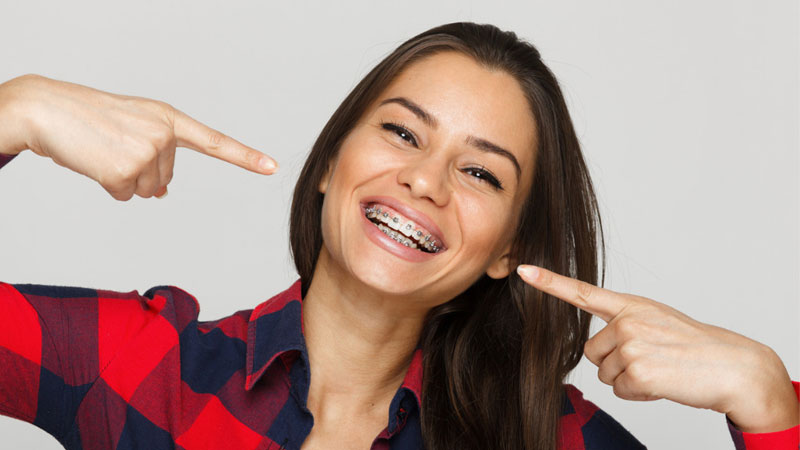Types of Orthodontic Treatment

Orthodontic treatments go a long way in supporting dental health. An orthodontist performs procedures to fix various hitches such as spacing, teeth crowding, improper bites, crossbites, and tooth eruption. Expert orthodontists such as Dr. Amy from OMG Smiles rectifies these problems and helps people get back their smiles.
Orthodontic treatment is a way to improve the appearance of your teeth. Procedures can vary from straightening and moving to enhance, depending on the problem. Regardless of which orthodontic treatment you opt for, the treatment enhances the look of your teeth and offers long-term oral health benefits.
If you're considering undergoing orthodontic treatment, it is important to understand its types. While there a quite a few of them, keep in mind that each depends on the specific orthodontic problem and benefits you differently. Your orthodontist decides which treatment suits your teeth the best after a thorough evaluation of the dental issue.
Keep on reading to find out more about types of orthodontic treatments and why your orthodontist may recommend them to you. Let's begin with the types of orthodontic problems you may face.
Type of orthodontic Problems
Crossbite
A crossbite is typically a misaligned bite in which your upper teeth sit inside the lower one when you close the mouth. The specific type of problem causes teeth to chip or wear down and may impact the cosmetic appearance of your teeth as well. If you face the problem of a misaligned bite or crossbite at the back of your mouth, you may face jaw problems, teeth grinding, and irregular facial development.
Crowding
Crowding is another most common problem many people need orthodontic care for as per Oral Health. You may suffer from this dental issue if you don't have sufficient space in the mouth to house teeth. With crowded teeth, brushing and flossing becomes a task and may contribute to plaque and tooth decay.
Dr. Amy, as an expert orthodontist, recommends patients see a dentist when they start developing crowding at a young age. It helps ensure proper teeth eruption without any severe problems in the future.
Spacing
Unnatural gaps between teeth lead to abnormal tooth spacing. Remember that excessive teeth in your teeth are also problematic, like any other dental problem. Most commonly, you'll face abnormal tooth spacing between your front teeth. But it doesn't mean that it can't happen at other places in the mouth. The problem may cause tooth decay and gingivitis, as it allows gums more area to develop bacteria.
Bite
When you have an improper bite, it means your lower and upper teeth don't meet properly. This dental issue is also referred to as malocclusion and can affect your teeth' appearance and face shape. It may have several types, such as:
- Open bite
- Underbite
- Deep bite
Improper eruption
If you lose baby teeth at a young age, adult teeth start erupting through the gums. However, improper teeth eruption occurs when adult teeth come out in the wrong place, at the wrong angle, and only partway. In such cases, the orthodontist recommends tooth extraction, aligners, and braces.
Types of Orthodontic Treatments
As mentioned above, if you have any dental issues mentioned above, you can opt for many orthodontic treatments. From invisible, micro, ceramic, metal to clear aligners, you can go for many options. Reputed and renowned orthodontic centers like OMG Smiles offer Invisalign, traditional braces, and gold braces.
Let's learn more about these options.
Traditional Braces
Traditional braces are some of the most common solutions to fix misaligned teeth. The braces consist of brackets and wires that your orthodontist affixes and threads through the teeth. If your teeth have severe misalignment, your dentist may encircle a metal band at the back of your teeth. He/she uses tiny bands called o-ring or ligatures to hold the wires.
In general, brackets are made of pure stainless steel. They have a wire of metal alloys to deliver better force to move your teeth.
At OMG Smiles, you can opt for gold braces to add sophistication to orthodontic treatment. The gold color brackets come in a darker shade and blend in with the teeth' color.
Invisalign Aligners
Your orthodontic specialist may recommend Invisalign aligners that are thin, clear, plastic-like trays. They fit in easily to straighten the crooked teeth. You need to put in and remove the aligners for two-three weeks as per your doctor's recommendation. The series allows teeth to move a fraction of an mm at a time. However, you need to remove aligners to brush, floss, or eat.
Retainers
Removable retainers are thin, clear, and slightly flexible, plastic-like material. Like Invisalign, they fit the placement and shape of the teeth. If you don't like removable retainers, you can go for fixed retainers.
Both are designed to hold teeth in the new position after the completion of orthodontic treatment. The retainers help newly attached or formed bone around the teeth to harden. It is essential to wear retainers according to your orthodontist to get the results.
Summing Up
All in all, orthodontic treatment plays an important role in keeping your teeth aligned and germ-free. You need to consult an expert orthodontist as he/she has the specialized knowledge to assess all possibilities considering your age, jaw imbalances, and differences in teeth size. He/she knows what will work best for your teeth to give you a beautiful smile.
Visit your orthodontist to determine which orthodontic treatment option is ideal for your teeth' needs.



Please login to publish a comment.
Comments (0)